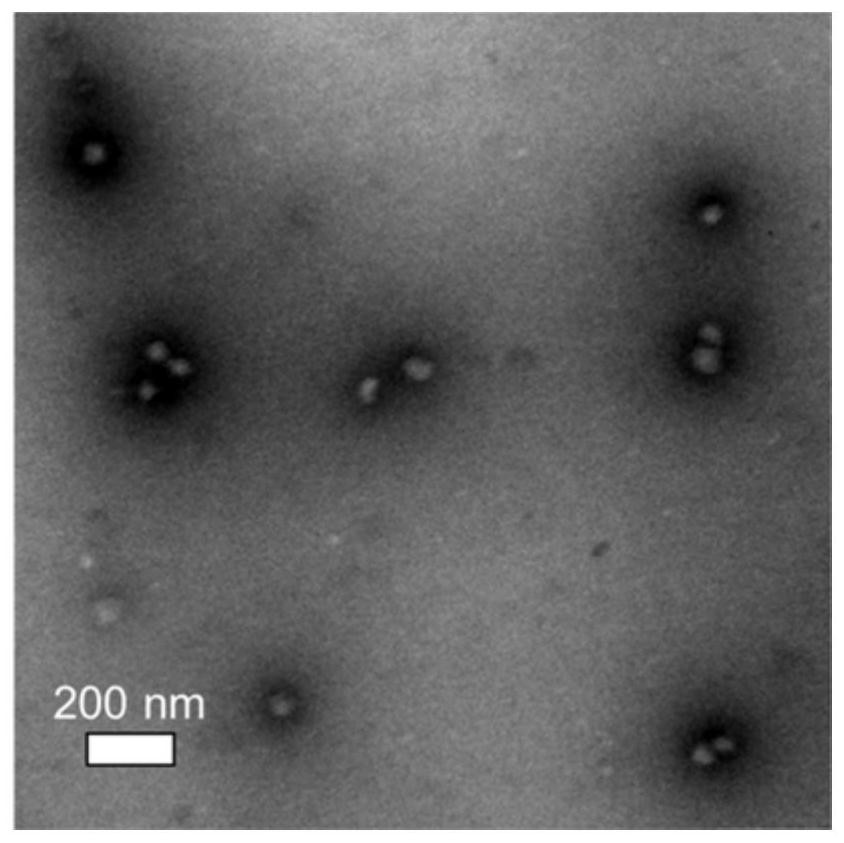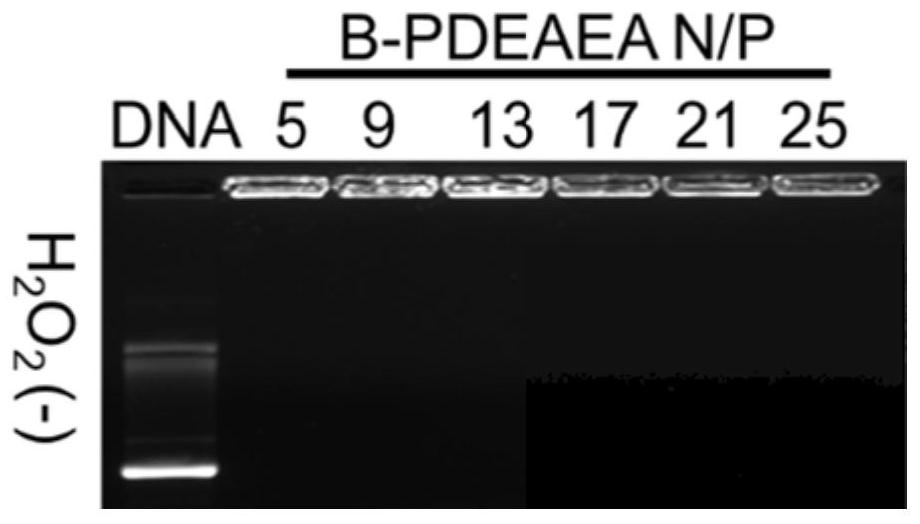A Sorafenib-gene co-loaded nano-medicine for cancer treatment and its preparation method and application
A nano-drug and cancer treatment technology, applied in the field of anti-tumor drugs, can solve problems such as no technical solutions, and achieve the effects of protein expression inhibition, efficient release, and promotion of dissociation
- Summary
- Abstract
- Description
- Claims
- Application Information
AI Technical Summary
Problems solved by technology
Method used
Image
Examples
Embodiment 1
[0060] Example 1: Preparation and characterization of nanoaggregates with different N / P
[0061] Plasmid DNA (USP22 shRNA) was diluted with HEPES buffer solution (10 mM, pH=7.4) to a solution having a DNA concentration of 40 μg / mL. According to the preset N / P ratio (N / P=5, 9, 13, 17, 21, 25), B-PDEAEA was dissolved in HEPES buffer solution (10mM, pH=7.4) at the corresponding concentration to obtain different concentrations of B-PDEAEA solution. Then, equal volumes of plasmid DNA solutions were added to B-PDEAEA solutions of different concentrations, and the mixture was immediately vortexed for 10 seconds, and then left to stand for 30 minutes to obtain nano-aggregate solutions with different N / P ratios.
[0062] The particle size, zeta potential and morphology of the nano-aggregates were detected by dynamic light scattering and transmission electron microscopy. The particle size and zeta potential of the nanoaggregates ( figure 1 ) results show that the particle size of na...
Embodiment 2
[0063] Example 2: Detection of Gene Loading Efficiency and Active Oxygen Response Ability of Nanoaggregates with Different N / P Ratio
[0064] 1. Gel retardation experiments of nanoaggregates with different N / P ratios
[0065] Take 20 μL of nano-aggregate solutions with different N / P ratios prepared in Example 1, and take 0.4 μg of shUSP22 diluted to 20 μL with HEPES buffer solution (10 mM, pH=7.4) as a control. The above 7 samples were loaded on the agarose gel containing Gel Red with a mass volume fraction of 0.8%, and electrophoresed in TBE buffer at 120V for 45 minutes. After electrophoresis, the gel was placed in a UV imager for imaging.
[0066] Electrophoresis results ( image 3 ) shows that the active oxygen responsive polymer B-PDEAEA selected in Example 1 can efficiently compress plasmid DNA and block the migration of DNA when the N / P ratio is between 5-25.
[0067] 2. Gel retardation experiment of nanoaggregates with different N / P ratios incubated in 200 μM hydrog...
Embodiment 3
[0070] Example 3: Inhibition efficiency of different N / P ratio nanoaggregates on USP22 protein expression in Huh-7 liver cancer cell line
[0071]150,000 Huh-7 cells were seeded in 6-well plates. After culturing overnight, the nanoaggregates with different N / P ratios prepared in Example 1 were added to the cell culture medium, wherein the concentration of shUSP22 was 8 μg / well. Lipofectamine 2000 (Lipo2000) loaded with shUSP22 plasmid and branched polyethyleneimine (PEI, 25kDa) were set as positive controls, and the mixing ratio of Lipo2000 and plasmid was 2 μL:1 μg; the N / P of PEI and plasmid DNA was 7. After incubation for 48 hours, discard the medium, collect the cells with trypsin after washing with PBS solution, and add 100 μL of RIPA lysate containing protease inhibitors to the cell pellet. The protein concentration was quantified by BCA method and the corresponding volume of Loading buffer was added, followed by protein gel electrophoresis and membrane transfer. Accor...
PUM
| Property | Measurement | Unit |
|---|---|---|
| particle diameter | aaaaa | aaaaa |
Abstract
Description
Claims
Application Information
 Login to View More
Login to View More - R&D
- Intellectual Property
- Life Sciences
- Materials
- Tech Scout
- Unparalleled Data Quality
- Higher Quality Content
- 60% Fewer Hallucinations
Browse by: Latest US Patents, China's latest patents, Technical Efficacy Thesaurus, Application Domain, Technology Topic, Popular Technical Reports.
© 2025 PatSnap. All rights reserved.Legal|Privacy policy|Modern Slavery Act Transparency Statement|Sitemap|About US| Contact US: help@patsnap.com



